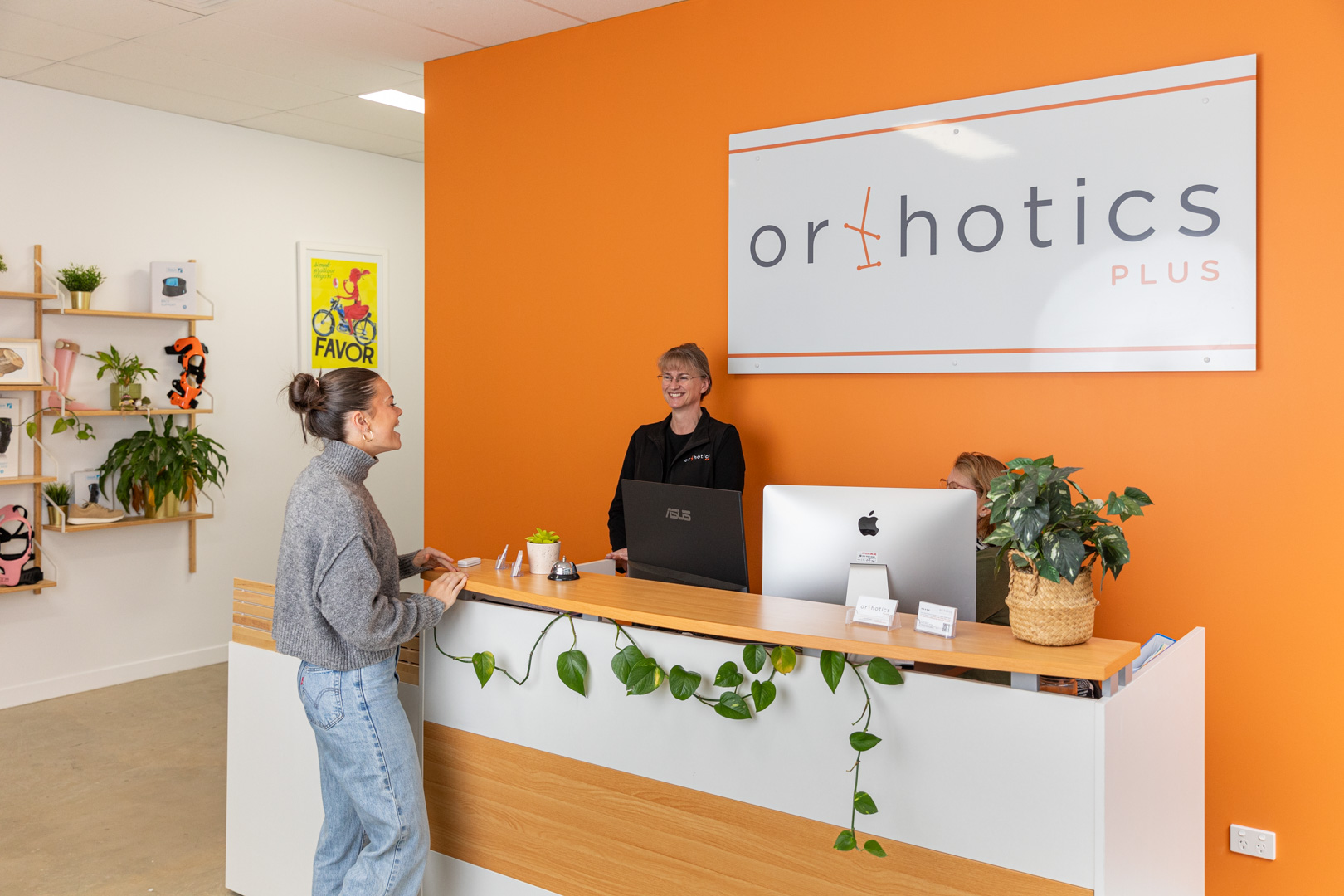AFOs for Multiple Sclerosis
Ankle-Foot Orthoses can play an important role in supporting people with multiple sclerosis (MS), particularly when addressing fatigue, weakness, instability, and functional goals.
While the presentation of MS varies greatly from person to person, several consistent clinical considerations guide AFO selection and customisation.
At Orthotics Plus, we work with patients with MS to trial, prescribe, make and customise AFOs.
We are NDIS registered and have multiple clinics throughout Melbourne, Victoria.
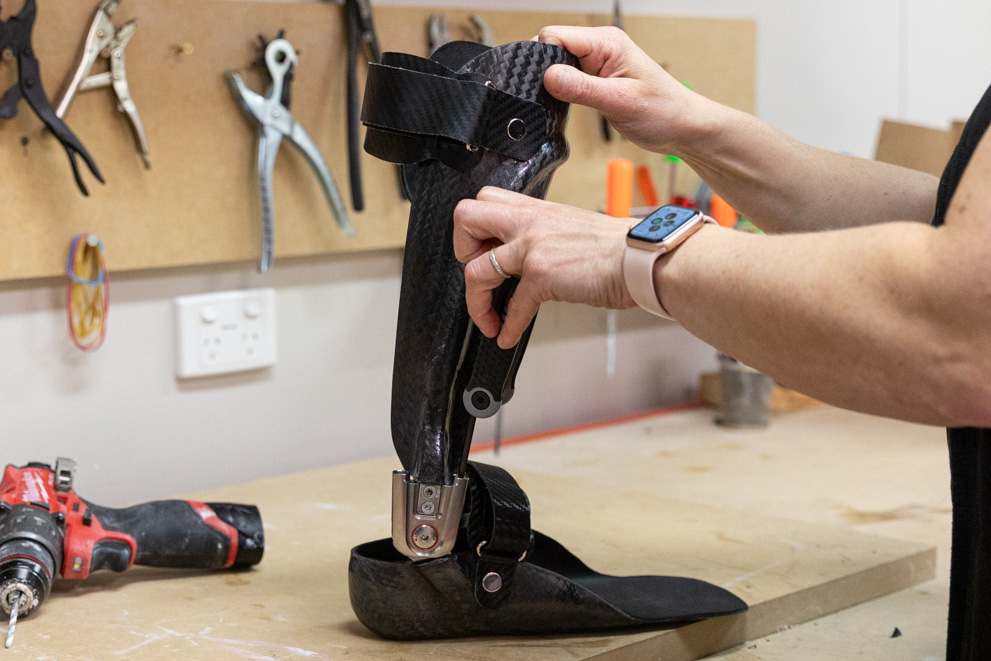
AFOs and the Management of Fatigue
One of the most significant challenges faced by people with MS is fatigue.
When prescribing an AFO, the weight of the device is often a major focus. Many symptoms of MS, such as foot drop, knee instability and hyperextension, can be similar to other neurological conditions, but MS often includes notable hip flexor weakness (caused by damage to brain or spinal cord pathways that control leg movement, especially the muscles that lift the leg).
As hip flexors are essential for swinging the leg through during gait, any added weight can amplify fatigue.
A lighter AFO can therefore be an important strategy to help preserve energy during walking. With that said, it’s not always about prescribing the lightest device possible, but rather being conscious of the physical load the person is managing with each step.
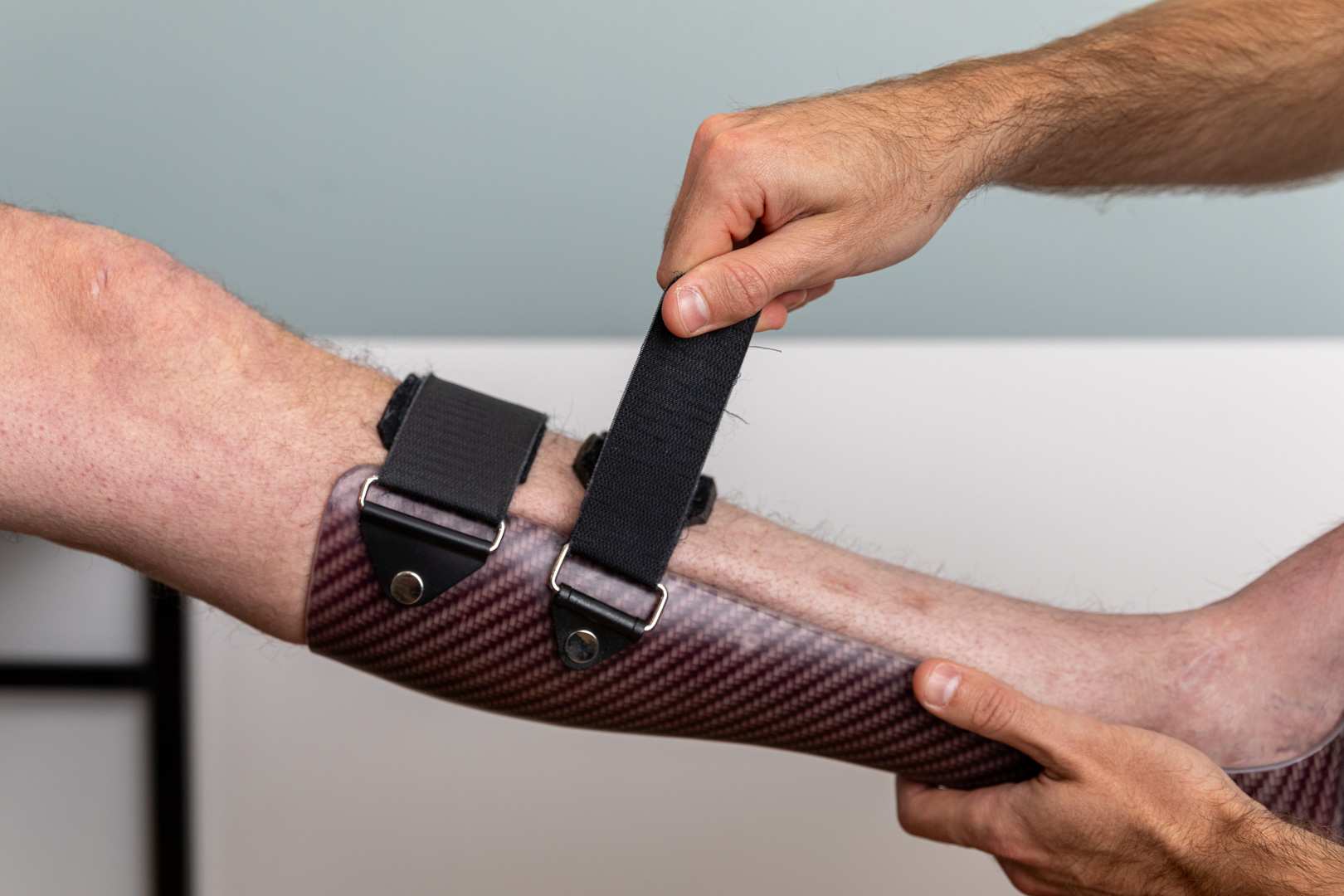
Walking Pattern and Multiple Sclerosis
When considering gait mechanics, the swing phase requires coordinated movement from the hip, knee, and ankle.
In MS, hip flexor weakness may be present and is not directly treatable with orthotic intervention, but dorsiflexion and knee stability can be supported.
An AFO that improves push-off during stance and assists toe clearance can enable better swing, even in the presence of hip weakness. In many cases, core strengthening and trunk stability can complement orthotic support to assist with limb advancement and balance.
Disease progression in MS is also an important factor in AFO prescription. Flare-ups can lead to declines in function, whether temporarily or permanently. This can result in increased foot drop or worsening knee hyperextension. If someone is using a dynamic device such as a Neuro Swing AFO, the internal components, such as springs, may need adjustment or replacement to provide more control or support in response to new factors.
Functional Electrical Stimulation (FES) is sometimes used as an alternative to, or alongside, an Ankle-Foot Orthosis (AFO).
FES devices can activate muscles in the front and back of the leg, as well as the thigh. This broader stimulation is especially useful in MS, where weakness often affects multiple muscle groups.
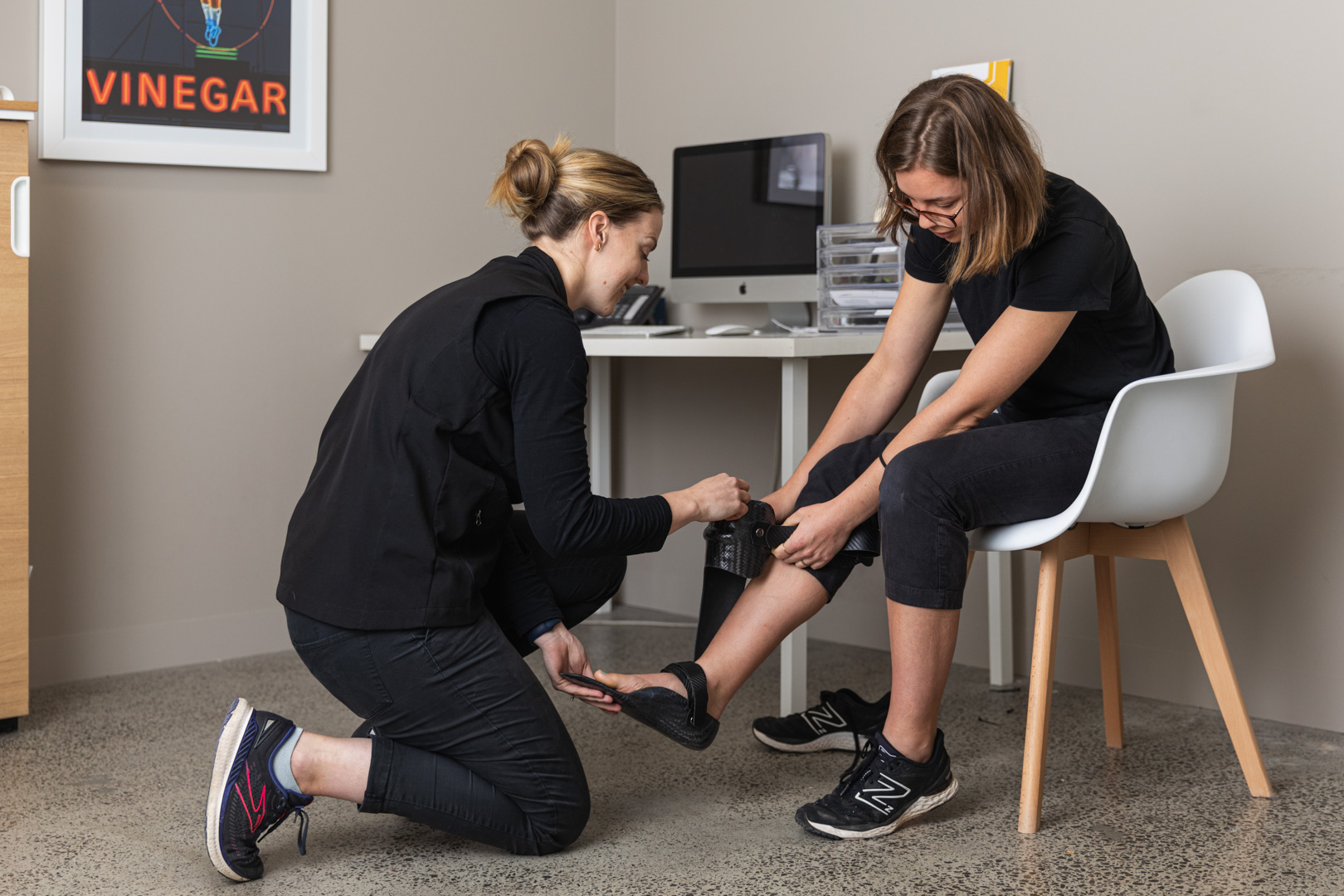
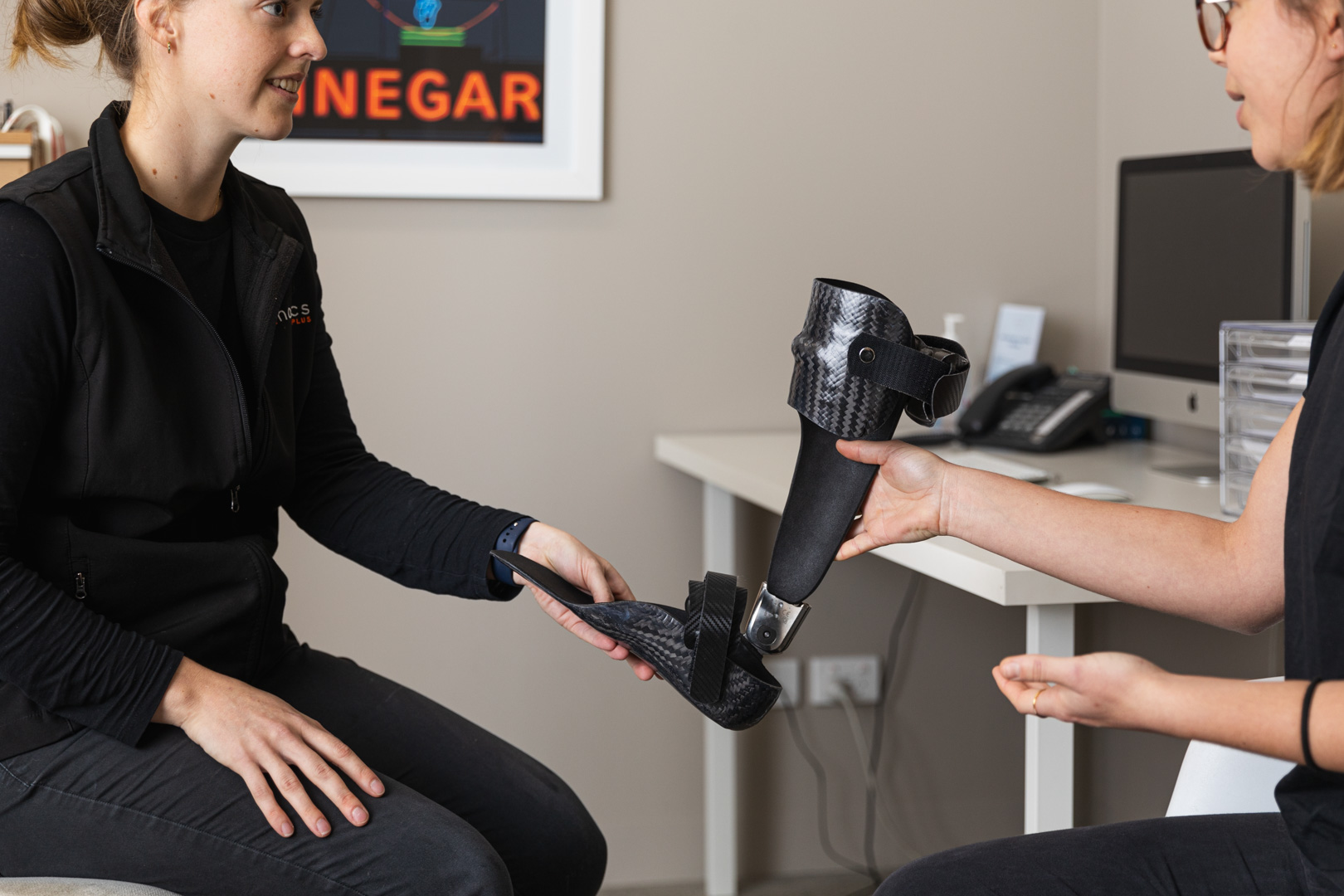
Personal Goals and Sensory Considerations
During an AFO trial or fitting, patient feedback is the centrepiece.
While a clinician may observe gait deviations and weakness, the individual’s personal goals provide the most useful guidance. For example, the everyday challenge may be rising from a chair or navigating stairs. For others, it may be fatigue during a specific activity such as standing to watch their child play sport.
Understanding what the person finds most difficult allows the orthotist to tailor the device to their daily life.
Sensory loss or sensory sensitivity can also be a consideration in MS, though it’s not present in all cases. Some individuals cannot tolerate contact on certain parts of the foot – i.e. – where straps or shoes make contact. In these situations, low-contact AFO options are available.
One example is the TurboMed, a device that clips onto the outside of the shoe and contacts only the calf. This style can be especially useful for those who experience pain or hypersensitivity in the feet.
Some patients also suffer from ‘hot feet’ or neuro pathic pain on the sole of the foot. We will try and find solutions to these problems alongside you.
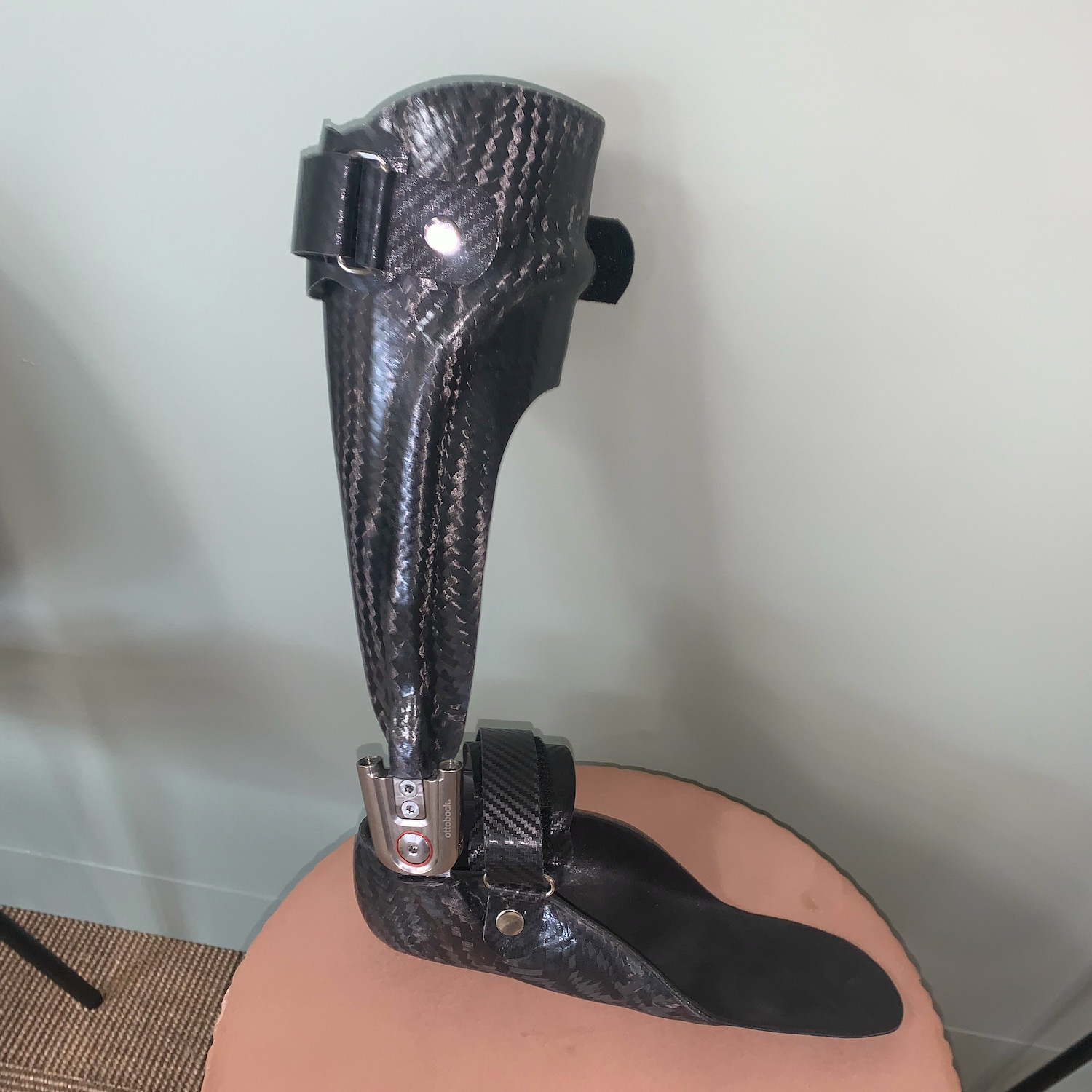
Changing Needs
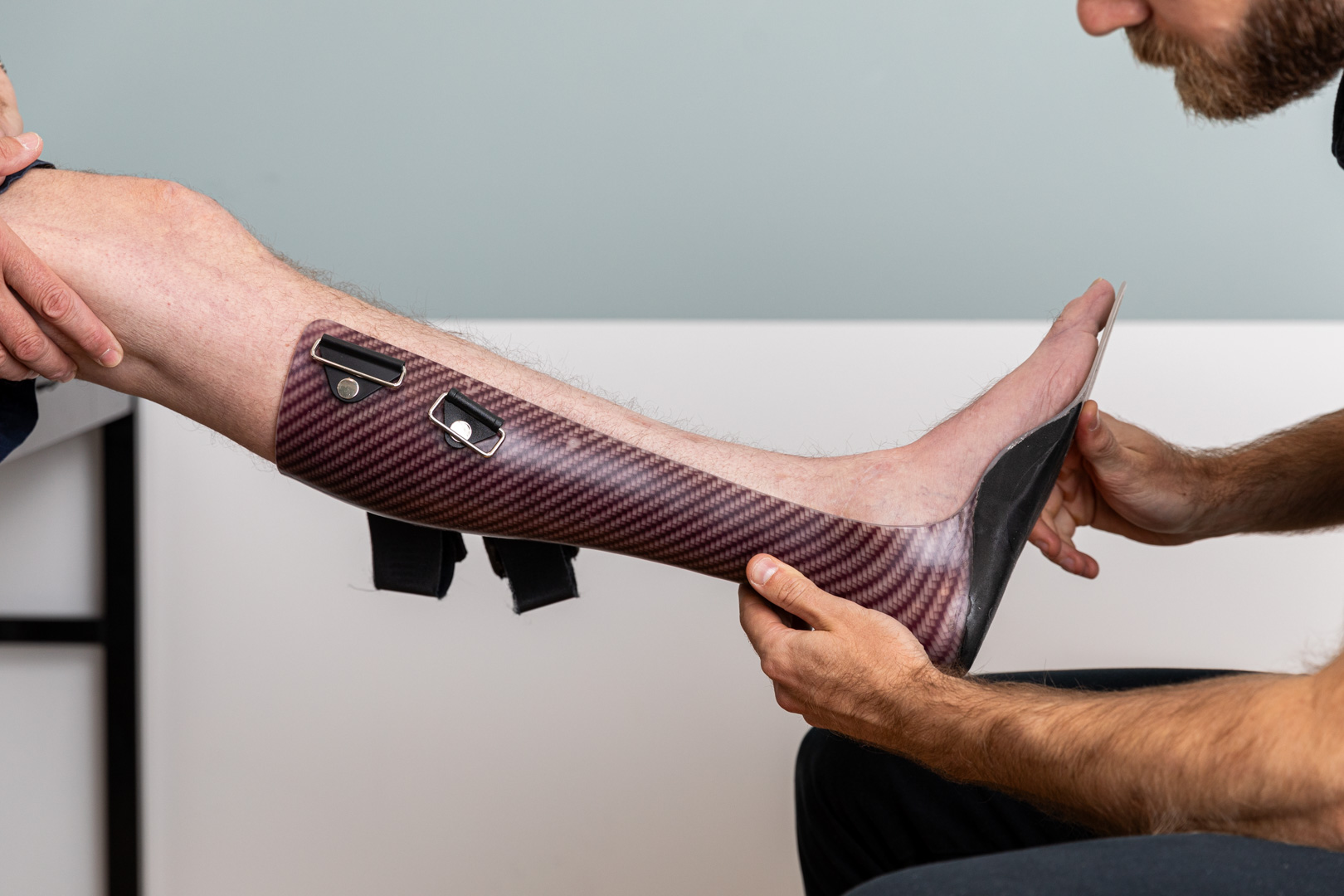
‘How will my AFO needs change over time?’ Some people with higher control devices such as a solid plastic AFO express a desire to move to something slimmer, lighter, or more discreet. Others may need to increase support due to MS progression.
In either case, the orthotist will conduct a functional trial. By comparing gait and stability in a minimal device like a leaf spring AFO versus a more supportive option like a Neuro Swing, the patient can see and feel the difference.
Show more
Although lighter devices may be more cosmetically appealing, many patients find that higher support options provide better function and safety.
Show less
Comorbidities
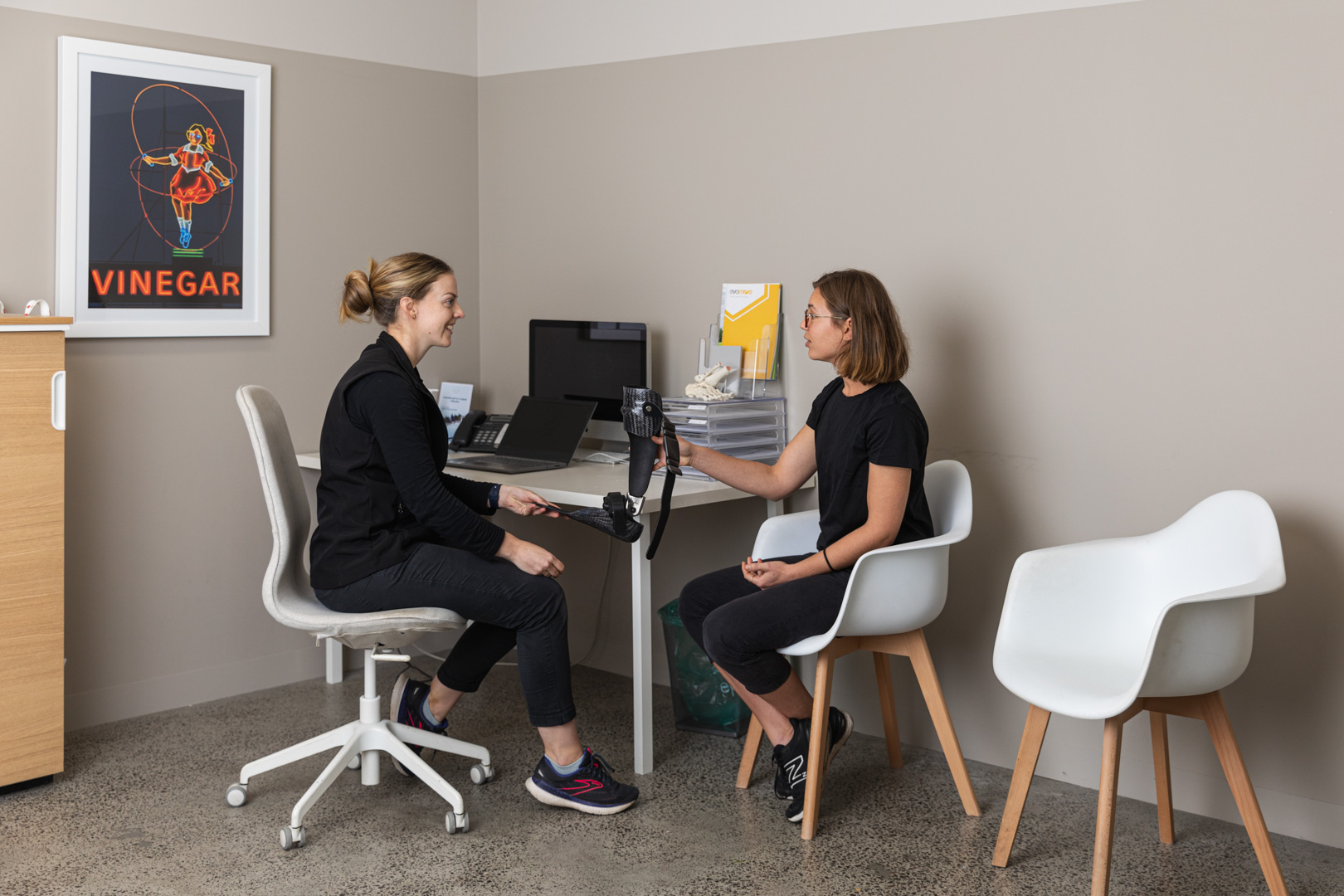
Comorbidities are part of the AFO consideration process.
Someone with MS may also experience pelvic instability, scoliosis, or even secondary conditions like stroke. For example, if someone lives alone and cannot put on their device independently, even the most advanced AFO becomes ineffective.
In each case, the device must match the user’s physical abilities, daily routines, and care environment.
Example
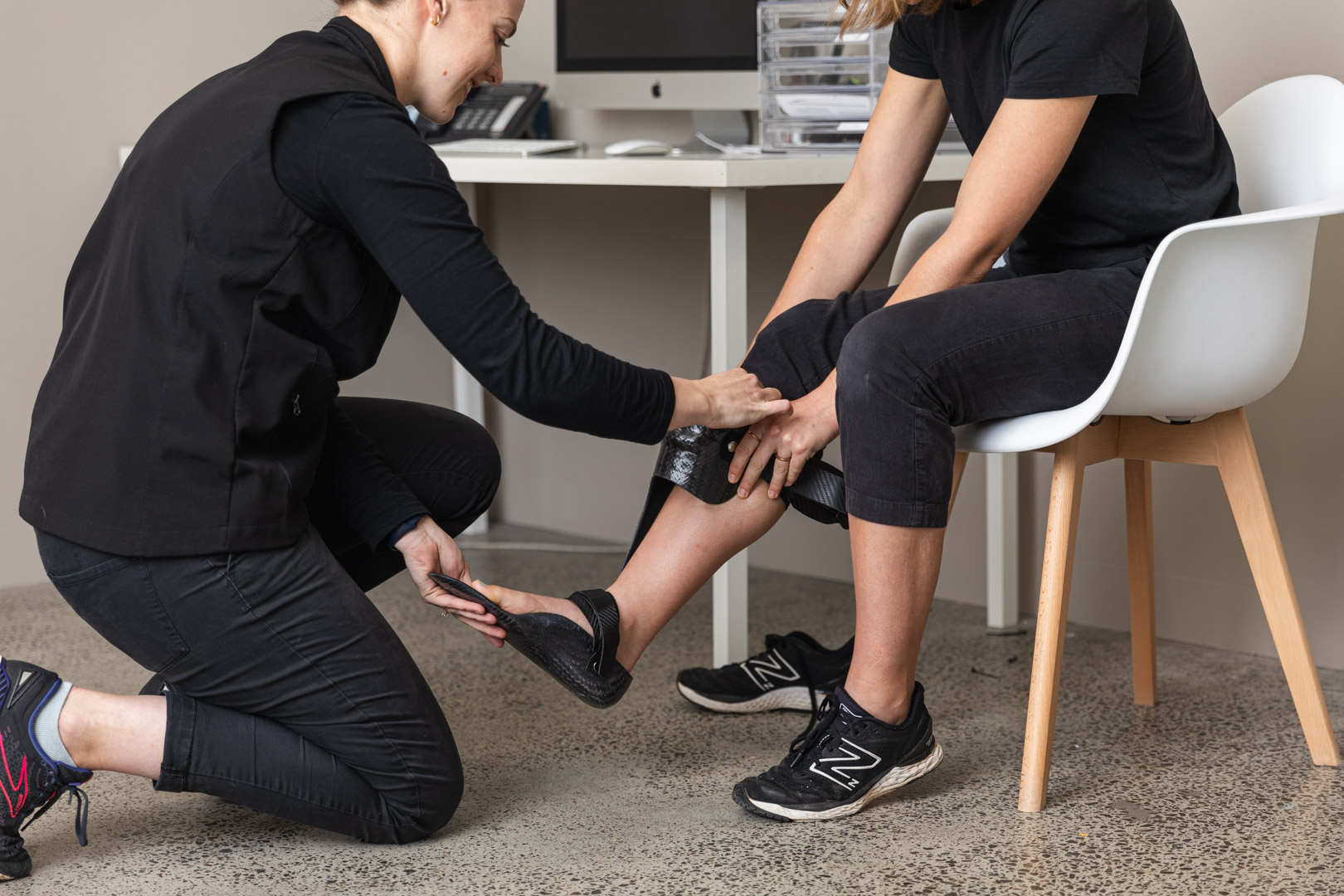
One example of adapting an AFO design to a comorbidity involves a patient with widespread weakness in both legs and one arm. Although he could manage the gross movements required to put on his AFO, he struggled to tighten the straps.
As such, the straps were modified with large loops to improve grip and ease of tightening. Furthermore, fastening systems like ratchets or BOA dials were considered but may not have been suitable given his reduced hand strength.
Show more
These small adjustments make a significant difference in daily independence.
AFO prescription for MS is not static, it is a responsive and collaborative process. By regularly reviewing the individual’s functional goals, physical condition, and preferences, orthotists can ensure each device supports optimal mobility, comfort, and participation in life.
Show less
We Look Forward to Hearing From You
Are you living with MS or know someone that does? If so, we encourage you to explore different Orthotic devices that can lead to improved quality of life.
- We advocate for your choice and control
- We are NDIS registered
- We stay current with the latest technology
- We can customise an AFO exactly to your preferences
To start the process, please get in touch with us by browsing our clinic locations in Melbourne!
